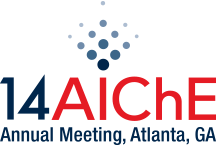

The United States Department of Energy (DOE) Office of Fossil Energy (FE), in conjunction with its National Energy Technology Laboratory (NETL), conducts research, development and demonstration (RD&D) of advanced fossil-based energy conversion technologies, with a focus on electric power generation with carbon capture and storage (CCS). This analysis focuses on the market conditions which favor the deployment of carbon capture technologies, and the sensitivity of projected CCS deployment levels resulting from successful NETL Capture and Storage RD&D programs. This analysis is conducted via engineering-economic analysis using the NETL CO2 Capture Transport Utilization and Storage (CTUS)-National Energy Modeling System (NEMS), which portrays a detailed representation of saline storage and enhanced oil recovery (EOR) opportunities. CTUS-NEMS was developed by NETL in an effort to quantify the economic and environmental benefits of its RD&D activities in the areas of carbon capture, utilization, and storage. The model is an enhancement to the Energy Information Administration’s (EIA) National Energy Modeling System (NEMS), which is used in the preparation of the Annual Energy Outlook (AEO), via integration of the CTUS sub-module into the NEMS model. The enhancement adds the capability to represent physical and economic interactions in a CO2 market, composed of a network of sources, transport links, and storage reservoirs. The sources consist of representations of coal- and gas-fueled power plants with carbon capture technology (new and retrofits), industrial sites capable of capturing CO2, and natural CO2 reservoirs. Each of the nodes in the CO2 market network is given the ability to respond to external forces, such as demand for CO2 from an EOR market, as well as carbon policies. The transportation network is composed of dedicated and trans-shipment pipelines, which can deliver CO2 from an individual (or combination of) source(s) to multiple storage reservoirs, while minimizing transportation system costs. Finally, the available storage reservoirs are a representation of both saline sequestration and EOR sites. The model was successfully integrated into EIA’s NEMS system, and it is now part of the code used to generate the AEO 2014.
The CTUS modeling enhancements enable the representation of location specific costs for sources, storage reservoirs, and EOR sites which are then connected by transport costs which depend on CO2 volume and distance unique to the source-destination pairing. The costs of CCS retrofits for existing coal and natural gas units, as well as industrial sources, are based on the FE/NETL Carbon Capture Retrofit Database (CCRD); this cost is modified by the use of multipliers in order to represent the impacts of R&D over time. The cost of saline storage is based on the FE/NETL CO2 Saline Storage Cost model. The integration of the CTUS model into NEMS permits a user to not only obtain direct results from the deployment of CO2 related infrastructure, but also the indirect impact of the deployment of such technology on the U.S. energy markets.
For selected scenarios, results show that there is an increase in the construction of new power plants with carbon capture equipment which take advantage of the opportunity offered by the availability of an EOR market for the sale of the generated CO2. Also, there is a corresponding increase in the production of oil from EOR sites. Impacts on emissions and the cost of electricity are also examined. Results show that when a CO2 tax policy is implemented, a substantial increase occurs in the production of oil from EOR sites due to the widespread availability of CO2 from new and retrofitted coal and natural gas power plants with CCS. Additionally, the infrastructure economies of scale realized by the increased participation of sources due to the EOR revenue stream result in an expanded saline storage network. Cost and performance goals from NETL’s Capture and Storage Research and Development programs were modeled as well. Comparison of the scenarios with and without program R&D cost and performance impacts represented enable the estimation of the potential impacts on emissions, oil production, and the cost of electricity which are attributable to these programs.
